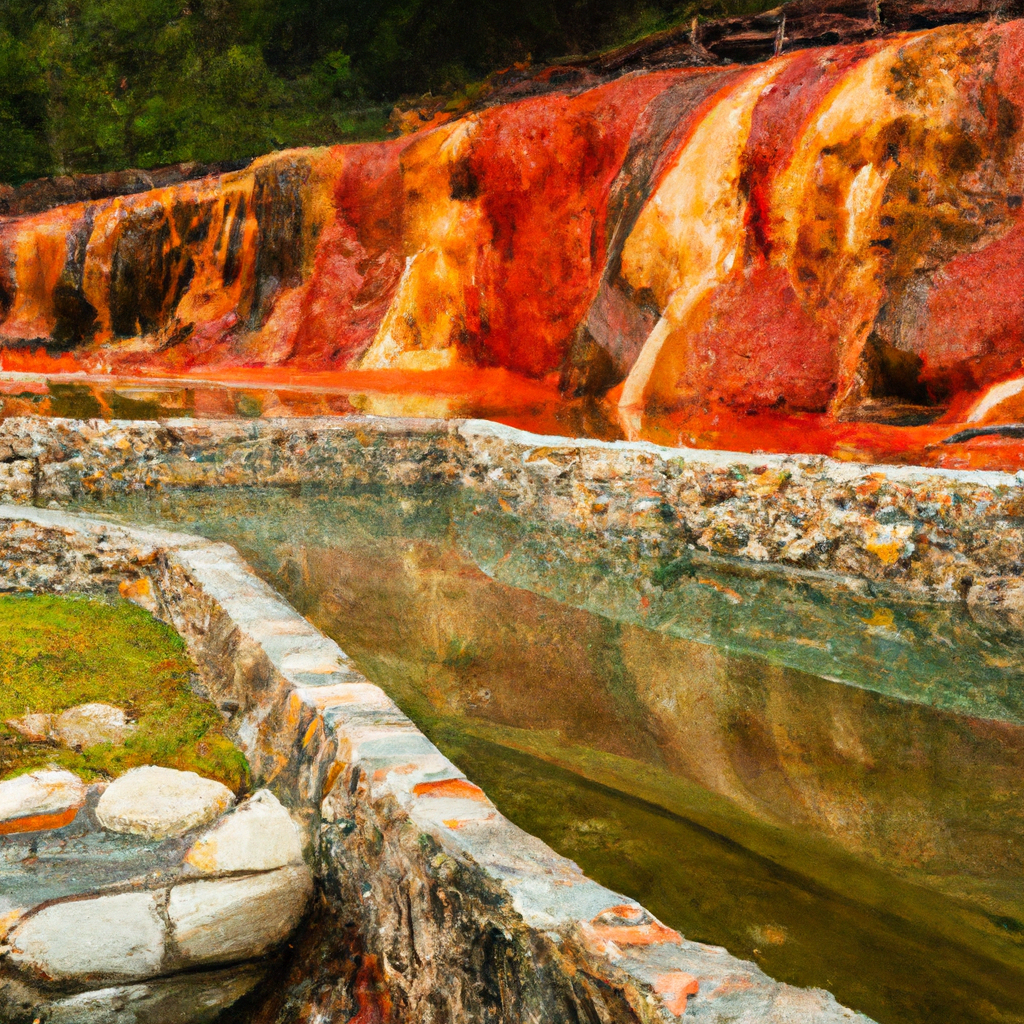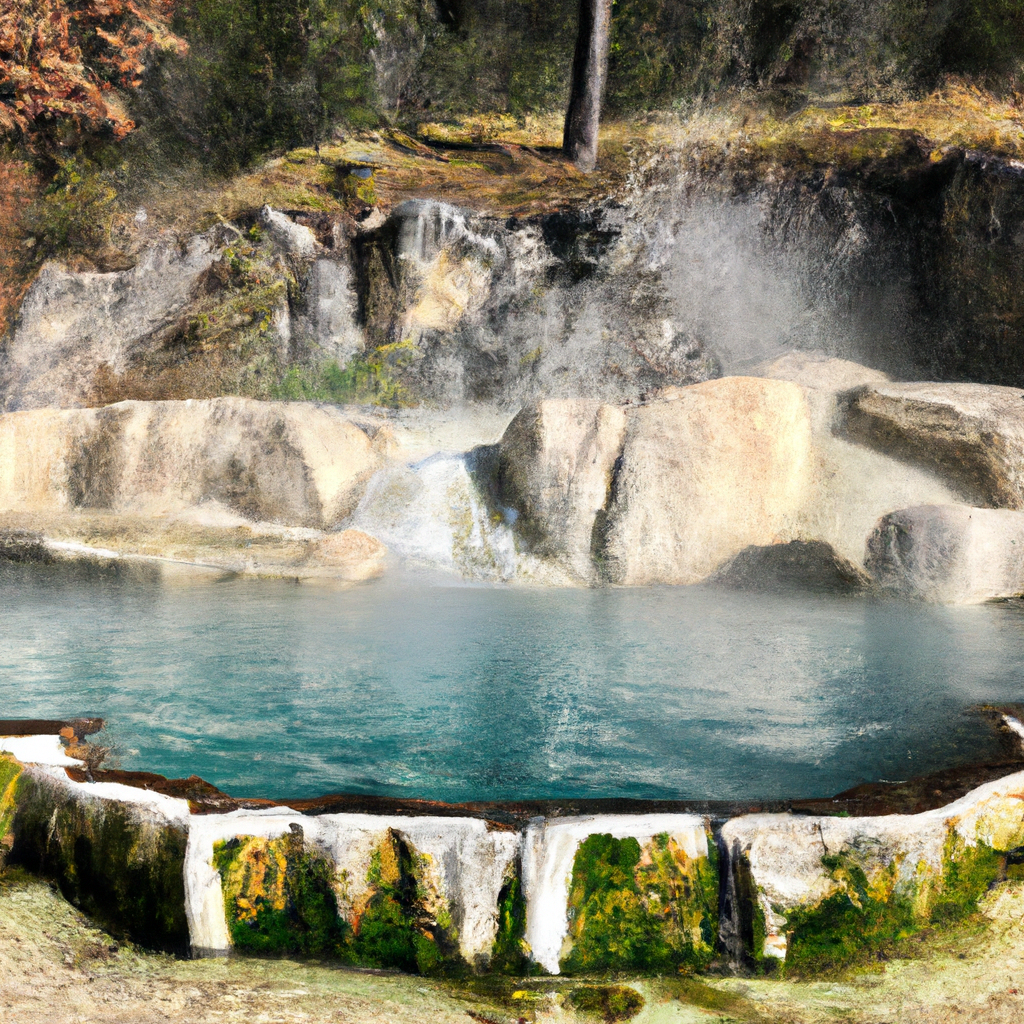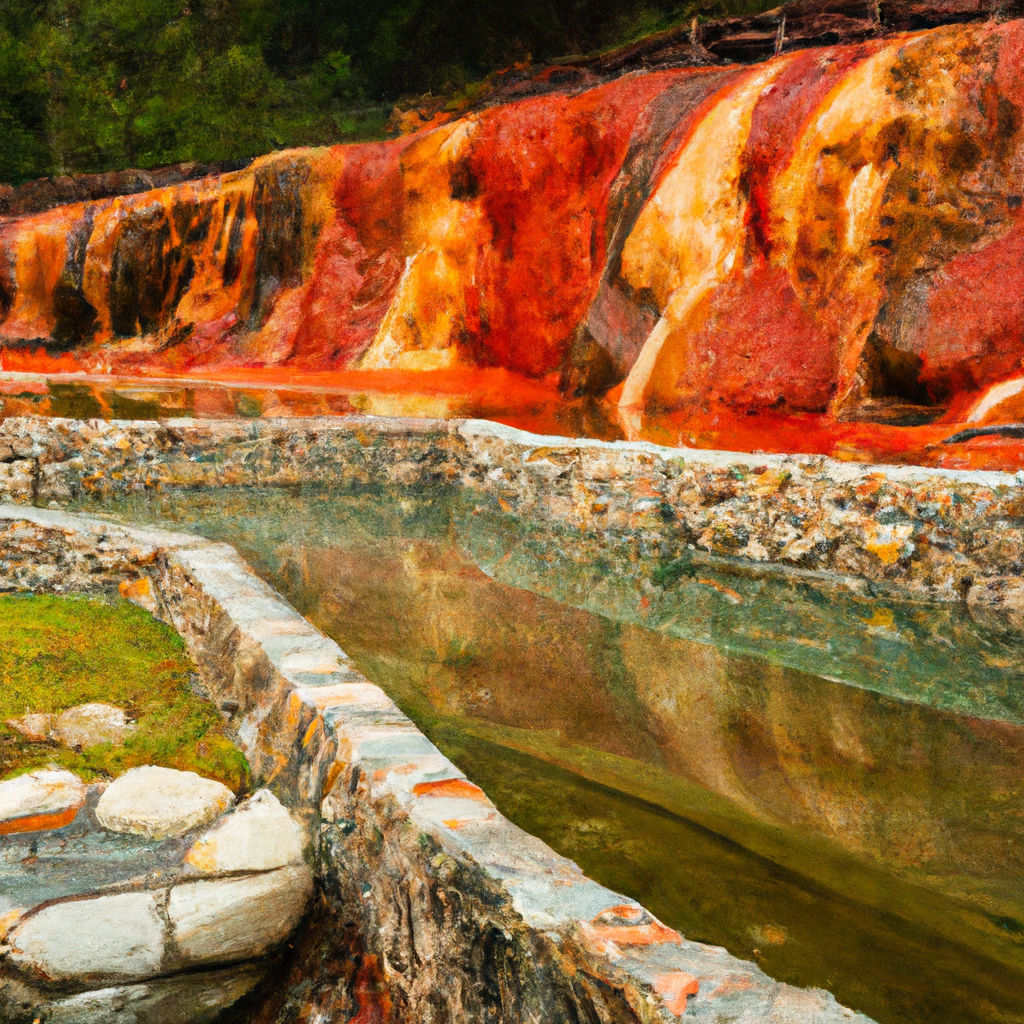Immerse yourself in the enchanting world of hot springs photography with these expert tips and tricks. Whether you̵7;re an avid photographer or just starting out, capturing the ethereal beauty of hot springs can be a truly magical experience. From understanding the best time of day to shoot, to choosing the right equipment and composition techniques, this article will guide you on how to capture the captivating allure of hot springs through your lens. Get ready to unlock the secrets of hot springs photography and create breathtaking images that will leave everyone in awe.

Choosing the Right Equipment
Camera
When it comes to hot springs photography, choosing the right camera is crucial to capture the magic of these natural wonders. While a high-end DSLR can provide you with excellent image quality and control, you don’t necessarily need the most expensive gear to capture stunning photos. A mirrorless camera or even a high-quality smartphone can also yield impressive results. Whichever camera you choose, make sure it has manual control options and a good sensor for capturing detailed images.
Lenses
Selecting the right lenses is equally important in hot springs photography. A wide-angle lens is highly recommended for capturing the vastness and grandeur of hot springs landscapes. It allows you to include more of the surroundings in your frame, creating a sense of depth and immersion. Additionally, a macro lens can be used to capture stunning close-up shots of the intricate details found within the hot springs.
Tripod
A sturdy tripod is an essential tool for achieving sharp and well-composed hot springs photographs. It helps to eliminate camera shake, especially when shooting in low light conditions or using longer shutter speeds. Look for a tripod that is lightweight and easily portable, as you may need to hike to get to some hot springs locations. A tripod with adjustable legs and a ball head allows for more flexibility in positioning your camera for the perfect shot.
Understanding the Lighting
Natural Lighting
The natural lighting available at hot springs can significantly impact the mood and overall aesthetic of your photographs. Consider the time of day when planning your shoot, as the angle and intensity of sunlight can vary greatly. Shooting during the golden hour, the time shortly after sunrise or before sunset, can bathe the landscape in warm and soft light, resulting in breathtaking photos. Experimenting with different lighting conditions throughout the day will allow you to capture unique perspectives and enhance the natural beauty of the hot springs.
Golden Hour
The golden hour, also referred to as the magic hour in photography, is a period of time shortly after sunrise or before sunset when the sun is low in the sky. During this time, the light becomes softer, warmer, and more diffused, creating a captivating atmosphere. It is the perfect opportunity to capture hot springs in all their glory, with gentle light caressing the surroundings and providing a dreamy, ethereal feel to your photos.
Artificial Lighting
In some cases, you may need to rely on artificial lighting to achieve your desired results in hot springs photography. This can be particularly useful when shooting at night or in dimly lit areas. LED panels, spotlights, or even handheld flashlights can be used to selectively illuminate certain elements of the scene and add a dramatic touch to your photos. Experiment with different lighting techniques to create unique and visually striking compositions.
Composition Techniques
Rule of Thirds
The rule of thirds is a fundamental composition guideline that can greatly enhance the visual impact of your hot springs photographs. Imagine breaking your frame into a 3×3 grid, both horizontally and vertically. By placing key elements of interest along these gridlines or at their intersections, you create a more balanced and visually appealing composition. When photographing hot springs, you can position the horizon along one of the horizontal lines, while placing the main focal point, such as a steam vent or a person, at one of the intersections for a more dynamic and engaging image.
Leading Lines
Incorporating leading lines into your hot springs photography can guide the viewer’s gaze towards the main subject or add depth to the composition. Look for natural elements like trails, pathways, or flowing steam that create a sense of direction and draw the viewer’s attention towards the hot springs. Position yourself in a way that allows these lines to converge towards the focal point and lead the viewer’s eye through the frame, creating a more immersive experience.
Foreground Interest
Including foreground interest in your hot springs photography can add depth and visual interest to your images. Look for interesting elements such as rocks, plants, or textures that can serve as a visually appealing foreground to complement the hot springs in the background. By incorporating these foreground elements, you not only create a more three-dimensional composition but also provide the viewer with a point of reference and a sense of scale, showcasing the grandeur of the hot springs.
Capturing the Steam and Mist
Adjusting Exposure
The steam and mist rising from hot springs can create a dreamy and atmospheric effect in your photographs. However, it can also pose a challenge when it comes to exposure. To capture the steam and mist effectively, it is essential to adjust your exposure settings accordingly. Consider using spot metering to meter off the steam or mist itself, rather than the overall scene. This will prevent the bright areas from being overexposed and retain the delicate details of the steam, resulting in more balanced and atmospheric photos.
Using a Diffuser
When shooting hot springs, the intense heat and humidity can cause excessive contrast and harsh lighting conditions. To diffuse and soften the light, consider using a diffuser. A translucent umbrella or a specialized diffuser panel can help to create a more even and gentle light, reducing harsh shadows and creating a more flattering environment for your subjects and the overall scene. Using a diffuser can also help to minimize the glare caused by the reflection of sunlight on the water’s surface.
Avoiding Lens Fog
When photographing hot springs, it’s common for condensation to build upon your camera lens due to the stark temperature difference between the hot springs and the surrounding air. This can result in foggy and blurry photos. To prevent lens fog, it’s advisable to let your camera acclimate to the environment before starting to shoot. Keep your camera equipment in a sealed camera bag or airtight container until it reaches the same temperature as the hot springs. Additionally, wiping your lens with an anti-fog cloth or using an anti-fog lens spray can help mitigate fogging issues.

Working with Water Reflections
Polarizing Filter
A polarizing filter is a must-have accessory when capturing water reflections in hot springs photography. It helps to reduce glare and reflections on the surface of the water, allowing you to capture clearer and more vivid reflections. By rotating the polarizing filter, you can adjust the intensity of the effect, making the reflections appear stronger or softer depending on your desired outcome. Keep in mind that a polarizing filter may also reduce the amount of light entering your lens, so you’ll need to adjust your exposure accordingly.
Low Camera Angle
To enhance the impact of water reflections in your hot springs photography, consider positioning your camera at a low angle. By getting closer to the water’s surface and shooting from a lower perspective, you can create stunning symmetrical compositions that showcase both the beauty of the hot springs and their reflection. This technique adds a sense of majesty and tranquility to your photos, allowing viewers to immerse themselves in the scene.
Experiment with Angles
Don’t be afraid to experiment with different angles when capturing water reflections in hot springs photography. You can try shooting from different heights, tilting your camera at various angles, or even using a wide-angle lens to capture a broader perspective. Each angle will offer a unique perspective on the hot springs and their reflections, allowing you to create diverse and visually captivating compositions.
Including People in Hot Springs Photography
Posing Tips
When including people in your hot springs photography, it’s important to communicate and guide your subjects to achieve natural and engaging poses. Encourage them to relax and enjoy the moment, as capturing genuine expressions and emotions can greatly enhance the overall mood of the photo. Experiment with different poses, such as sitting on the hot springs edge, submerging their feet in the water, or leaning against nearby rocks. By posing your subjects in a way that complements the surroundings, you can create visually interesting and storytelling images.
Incorporating Movement
Incorporating movement in hot springs photography can add a dynamic element and a sense of energy to your images. Encourage your subjects to play, splash, or even jump in the water. Capturing the motion of the water and the interaction with your subjects will inject a sense of excitement and joy into your photos. Additionally, you can experiment with long exposure techniques, such as capturing a person’s movement as they walk across the hot springs. This can create ethereal and abstract results that beautifully contrast with the serene surroundings.
Employing Props
Using props in hot springs photography can enhance the visual interest and storytelling aspect of your photos. Consider bringing along simple props like towels, hats, or floating objects to create a sense of leisure and relaxation. Props can also help to frame your subjects and draw attention to specific elements within the composition. However, it’s important to keep in mind not to overcrowd the scene with too many props, as it can distract from the natural beauty of the hot springs.
Editing Techniques for Hot Springs Photography
Enhancing Colors
During the editing process, you can enhance the colors in your hot springs photography to make them more vibrant and captivating. Adjusting the saturation and vibrance sliders can bring out the natural hues of the hot springs, making the water appear more inviting and the surrounding foliage more lush and vibrant. Be mindful not to overdo the color adjustments, as it can result in an unrealistic and oversaturated look. Aim for a balance that accurately represents the beauty of the hot springs while still maintaining a natural and pleasing appearance.
Adjusting Highlights and Shadows
Fine-tuning the highlights and shadows in your hot springs images can significantly improve the overall tonal range and depth. By adjusting the sliders dedicated to these adjustments, you can recover details in overexposed or underexposed areas, resulting in a more balanced and visually pleasing image. Pay close attention to preserving the delicate highlights in the steam and mist, as well as the shadows in the surrounding landscape, to create a more dynamic and immersive photo.
Adding Vignettes
Applying a vignette can draw attention to the central area of your hot springs photograph and create a more immersive viewing experience. A vignette enhances the perception of depth and directs the viewer’s gaze towards the focal point. When adding a vignette, be subtle and avoid overly darkening the outer edges, as it can appear unnatural. Aim for a gentle and gradual darkening that frames the hot springs and guides the viewer’s eyes towards the main subject.
Safety Precautions in Hot Springs Photography
Respecting the Environment
When photographing hot springs, it’s essential to respect the environment and leave it as you found it. Hot springs ecosystems are delicate and easily disturbed, so it’s important to stay on designated paths and avoid trampling vegetation or disturbing wildlife. Additionally, avoid throwing any trash or litter into the hot springs or the surrounding area. By practicing good environmental stewardship, you can help preserve the natural beauty of hot springs for future generations to enjoy.
Being Aware of Surroundings
When exploring and photographing hot springs, it’s crucial to be aware of your surroundings and stay vigilant to potential hazards. This includes watching out for unstable ground, avoiding steep or slippery areas, and being cautious of fast-moving water or sudden changes in temperature. Hot springs can be unpredictable, and it’s important to prioritize your safety and the safety of others at all times.
Protecting Your Gear
Hot springs photography can expose your equipment to potentially harmful elements, such as steam, water, and extreme temperatures. To protect your gear, consider using a waterproof camera bag or protective covers to shield it from moisture. It’s also a good practice to wipe down your equipment with a dry cloth after shooting in a hot springs area to remove any moisture or condensation that may have accumulated. By taking the necessary precautions, you can ensure the longevity and functionality of your gear.
Tips for Hiking to Hot Springs Photography Locations
Researching the Trail
Before embarking on a hike to a hot springs photography location, make sure to conduct thorough research. Gather information about the difficulty level, length, and terrain of the trail to ensure it aligns with your fitness and hiking experience. Look for any specific trail recommendations or restrictions in terms of photography, as some natural areas may have guidelines in place to protect the environment.
Checking for Permits
Certain hot springs photography locations may require permits, particularly if they are located on private land or within protected areas. Make sure to check the regulations and requirements beforehand to avoid any legal issues or fines. Obtaining the necessary permits not only ensures compliance but also helps in preserving the hot springs for future generations of photographers and nature enthusiasts.
Packing Essentials
When hiking to hot springs photography locations, it’s essential to pack smart and be prepared for the elements. Make sure to bring plenty of water, as hot springs hikes can be physically demanding and dehydrating. Additionally, consider bringing sunscreen, insect repellent, and a hat to protect yourself from the sun and potential bugs. Don’t forget to pack necessary camera gear, spare batteries, memory cards, a lens cloth, and a tripod to ensure you have everything you need for a successful shoot.
Dealing with Crowds in Hot Springs Photography
Choosing the Right Time
When photographing popular hot springs, it’s important to choose the right time to minimize the impact of crowds on your photos. Try to visit during weekdays or early mornings when fewer people tend to visit. This allows you to capture the serene beauty of the hot springs without the distraction of crowds, providing a more intimate and uninterrupted photography experience.
Using Long Exposures
Using long exposures can be a creative way to deal with crowds in hot springs photography. By employing longer shutter speeds, you can intentionally blur the movement of people, creating a sense of motion and transforming the crowded scene into an abstract representation. This technique can help you capture the essence and energy of the hot springs while minimizing the presence of individuals or distracting elements.
Photo Editing Tricks
In post-processing, you can employ various photo editing tricks to minimize the impact of crowds in your hot springs photography. Clone stamping or content-aware fill can be used to remove unwanted people or objects from the frame. Additionally, using the spot healing brush or patch tool can help blend out distractions and create a cleaner composition. However, it’s important to use these techniques sparingly and ethically, ensuring that the final result remains truthful to the scene you captured.
Hot Springs Photography: Tips and Tricks for Capturing the Magic Capturing the magic of hot springs through photography can be a rewarding and awe-inspiring experience. By choosing the right equipment, understanding the lighting, using composition techniques, and mastering key photography skills, you can elevate your hot springs photographs to new heights. Remember to prioritize safety, respect the environment, and be prepared when embarking on hiking adventures to hot springs locations. With these tips and tricks, you’ll be well-equipped to capture the ethereal beauty and tranquility of hot springs and create stunning images that showcase their magic for years to come.
